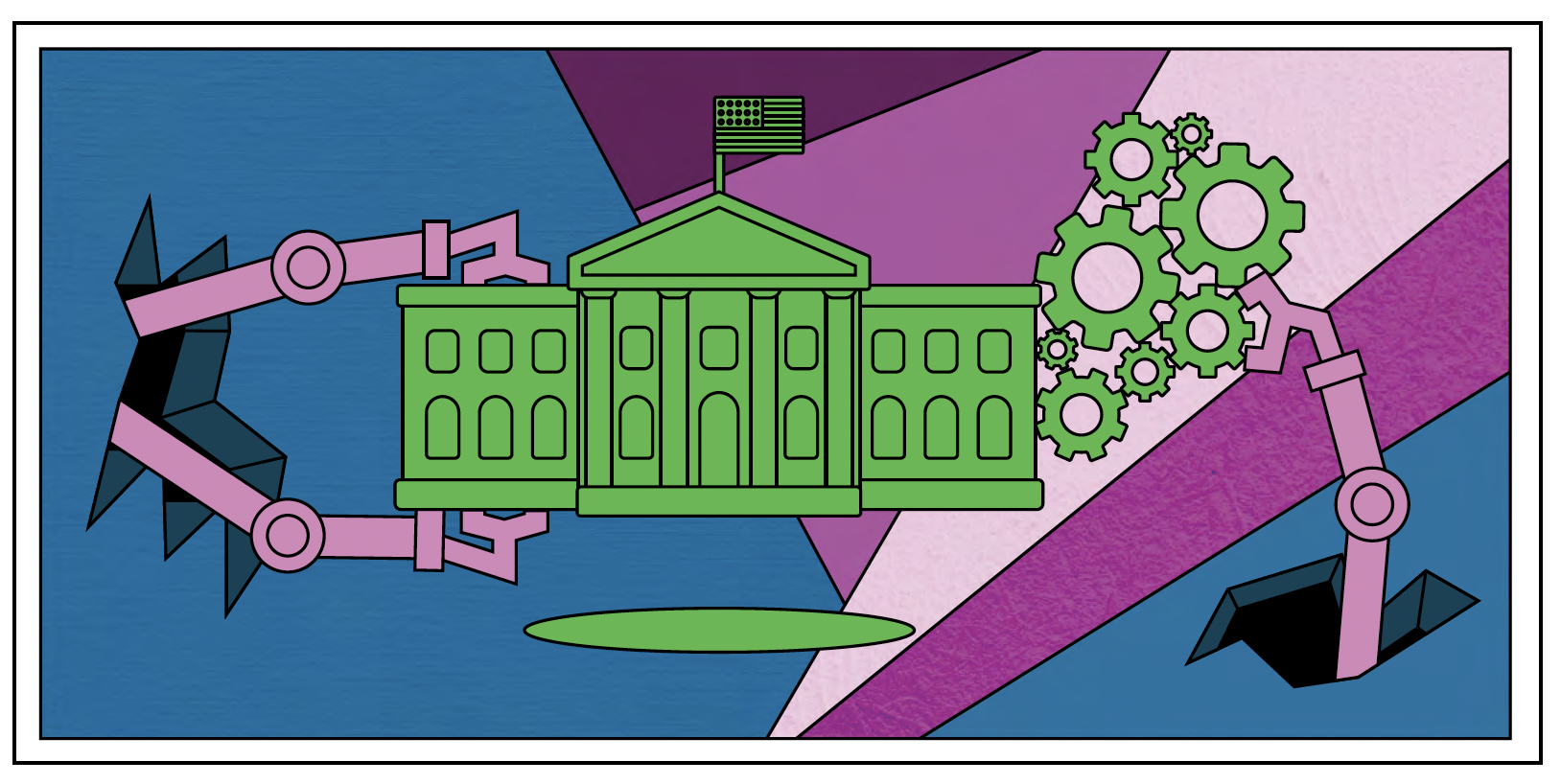AI could be one of the most significant areas of growth and development in government, as well as in places where the private sector and government meet. It is already transforming data collection, analysis and access, cybersecurity, and workforce management.
The White House’s Executive Order on the Safe, Secure, and Trustworthy Development and Use of Artificial Intelligence (EO) lays out a strategy focused on monitoring, regulating and staffing the development of AI-based innovations. The order calls for guidelines in specific areas of government concern, including national security, intelligence, defense, justice and law enforcement, energy, health care, and transportation.
AI could improve government operations and services, but it also poses risks. How can agencies prepare to deal with them while making the most of what AI might offer?
Following is what the EO envisions.
Some Agency Uses of AI
- The Environmental Protection Agency uses AI tools that estimate chemical exposure and the probability that a chemical might reach the general population.
- DOE uses AI to leverage a broad, multimodal data stream to predict and understand natural disaster scenarios.
- The Department of Agriculture employs AI to create hydrologic models of spring-summer river flow volumes across the western United States and Alaska.
Personnel Power
There is a clear strategy for surging AI talent in government.
For instance, the EO states that within 45 days of its Oct. 30, 2023, issuance, the White House will convene an AI and Technology Talent Task Force to identify best practices for recruiting and retaining AI staff, and within 180 days of the issuance, the task force will issue a report on government’s AI hiring progress.
In addition, the Office of Personnel Management will offer guidance on how agencies can use incentive and flexible pay programs to attract AI experts and will head an interagency working group to develop best practices for hiring AI talent across federal agencies.
Under the order, each agency must appoint a Chief AI Officer to coordinate work on AI and mitigate risks. Working with a governance board, the officer will develop processes for AI testing, including the use of red teams, or internal “hackers,” who work to expose system flaws. Generative AI is of particular concern.
All this ties in with AI.gov, which offers a portal to apply for federal job and fellowship opportunities and to find classes for building AI skills.
Safety First
One of the biggest challenges is ensuring that AI technology is safe for use in and outside government.
That’s why the EO requires the National Institute of Standards and Technology to set rigorous standards for red team testing of AI safety before systems are released to the public. Protecting critical infrastructure is a priority concern. In addition, the Department of Homeland Security will establish an AI Safety and Security Board and will work with DOE to assess chemical, biological and nuclear risks. The EO calls for an advanced cybersecurity program to develop AI tools to locate and repair vulnerabilities — building on an ongoing AI Cyber Challenge, a two-year competition to create new, AI-based security tools. And the order emphasizes strengthened development of and research into new privacy-preserving techniques, including cutting-edge AI systems.
Steps Toward Equity
The Blueprint for an AI Bill of Rights acknowledges that irresponsible AI use can create discrimination and bias, and the EO on Advancing Racial Equity and Support for Underserved Communities Through the Federal Government directs agencies to work against algorithmic discrimination.
The new EO goes further, outlining additional actions to lessen discrimination, such as implementing algorithmic training and coordinating with the Justice Department’s federal civil rights offices to develop best practices for dealing with AI-related civil rights violations.
Targeted concerns include housing, policing and criminal justice, labor and workplace, and agency support regarding the AI entrepreneurial ecosystem. That relates to facilitating technical assistance for small developers and “AI breakthroughs” for small businesses.
Making Friends With Machines
While there is still room to improve AI staffing and safety, there also is enormous potential in AI. Recognizing that, the EO lays out plans “to help agencies acquire AI products faster, more cheaply, and more efficiently.”
The order foresees AI-based advances in education and research and creates a National AI Research Resource — a “shared research infrastructure that would provide AI researchers and students with significantly expanded access to computational resources, high-quality data, educational tools, and user support.” The EO also calls for expanded grants for AI research related to health care and climate change. In turn, all those endeavors will inform government work.
“Harnessing AI for good and realizing its myriad benefits requires mitigating its substantial risks,” the EO states. “This endeavor demands a society-wide effort that includes government, the private sector, academia, and civil society.”
“In the end,” the order continues, “AI reflects the principles of the people who build it, the people who use it, and the data upon which it is built.”
This article appeared in our guide, “Agencies of the Future: How to Break Down Barriers to Growth.” For more about how governments are embracing change, download it here:





Leave a Reply
You must be logged in to post a comment.